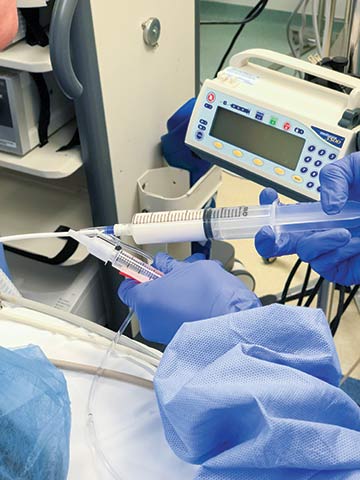Despite widespread coverage of high-profile outbreaks associated with unsafe injection practices, staff members who use needles and syringes continue to place patients at potential risk of bloodborne infection by violating basic infection control practices. A recent visit to a high-volume pain management facility with a short-staffed anesthesia department presented many examples of major breaches in safe injection practices that could endanger patients. We share them here in the hopes that you don't repeat these practices.
1Injectable medications previously drawn up in direct patient care areas were left on top of the anesthesia cart. Medications included sodium chloride and a syringe with a white milky substance (presumably propofol). We found them in an unattended operating room between procedures. Of course, proper practice is to store and access injectables in a non-patient care area if you're going to use them for more than one patient.
2An anesthesiologist carried a basket with several filled syringes — as well as some empty syringes that had been removed from their packages — from room to room. All syringes (empty and filled) had syringe caps on them, but filled syringes had been drawn up in the rooms (direct patient care areas) in advance of cases.
3An anesthesiologist carried a multi-dose vial of propofol with a spiking device in the basket back and forth between rooms. Pre-drawing medications and spiking IV bags as close to administration as possible is best practice. Spiking devices is not good practice.
4We found an opened, unlabeled multi-dose vial of labetalol in the procedure room anesthesia cart.
5Anesthesiologists failed to wipe the rubber diaphragm of the vial with alcohol before drawing up medication. And then they failed to "scr5b" the IV port, or hub, with alcohol before injecting medication.
6An anesthesiologist went from room to room with the same gloves, failing to perform hand hygiene between patients. When questioned, he said he felt overwhelmed by the volume of procedures and concerned about "tripling the time" for each case by following safe injection practices. Encourage your clinicians to speak up if they feel pressured to cut corners for the sake of maintaining a packed schedule.
.svg?sfvrsn=be606e78_3)

.svg?sfvrsn=56b2f850_5)